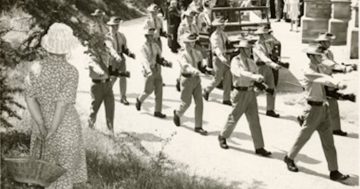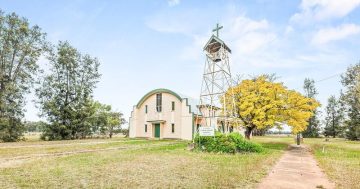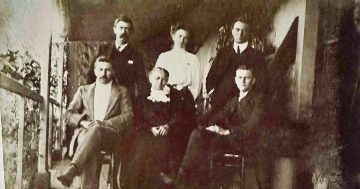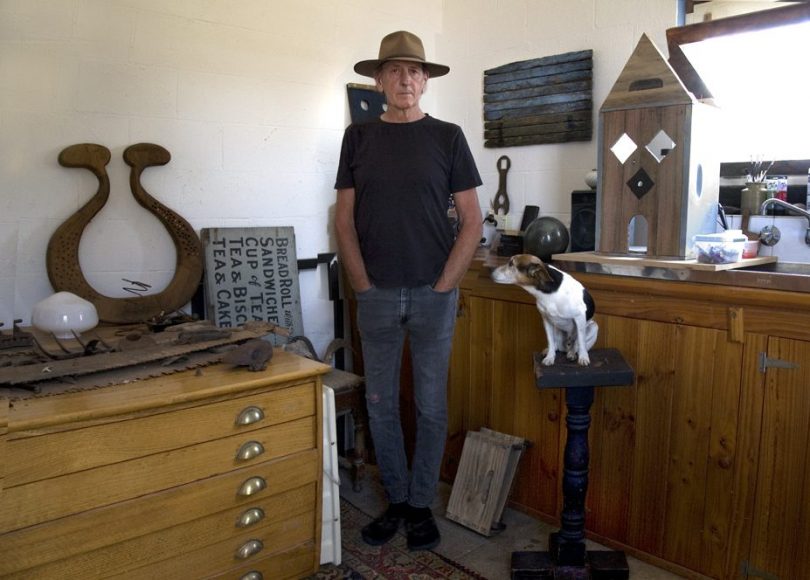
Photographer Ray McJannett with his dog Jack in his Jerrawa studio. Photo: Rae O’Brien.
For more than 20 years, Ray McJannett flew high as a senior photographer with the Australian War Memorial.
Whether it was shooting photographs from a warplane high in the sky or recording one of the nation’s most important yearly events, Anzac Day, it was all in his line of duty. History in the making.
Today, he and his wife Rae live their best lives in the tiny village of Jerrawa, just off the Hume Highway. The only change is that Ray now photographs a different sort of history – for pleasure.
Ray’s interest in photography began early. At age 18, a photographer friend began to show him the ropes, and he was hooked. His love of history and architecture also helped.
“To be able to print your own work back then, that was so important,” he said. “In some ways, the images were second. But it allowed me to develop a style of my own.”
Throughout the years, that style has remained the same. Capturing moments.
One of his favourite moments at the War Memorial was documenting the arrival of the Unknown Soldier into the Hall of Memory.
It was about 30 years ago when the remains of an unknown Australian soldier from World War I were exhumed from a French cemetery and brought to Australia. The whole project took more than eight months, he said, and the area was closed off while the tomb was created.
“I covered all of it,” he said. “On the day it happened, I climbed up the stairs, on the side of the dome, and shot it from above.”
It is something that will stay with him forever.
It was while he was still working at the War Memorial that Ray and Rae decided they wanted more space – for Rae’s horses and a studio for Ray. And the quality of life that would come with such a move.
They chose a 20-hectare site at Jerrawa, a small village about 30km from Yass.
“For us, it turned out to be the place where we wanted to be,” Ray said. “There was plenty of room for the horses, we built some stables, a workshop and a studio.”
Apart from the welcome the small community gave the family, one of the great attractions of the village was its history.
“There is so much of it out here,” he said. “Even the old derelict houses, the old bush architecture is quite amazing. I just love how light plays through these old buildings.”
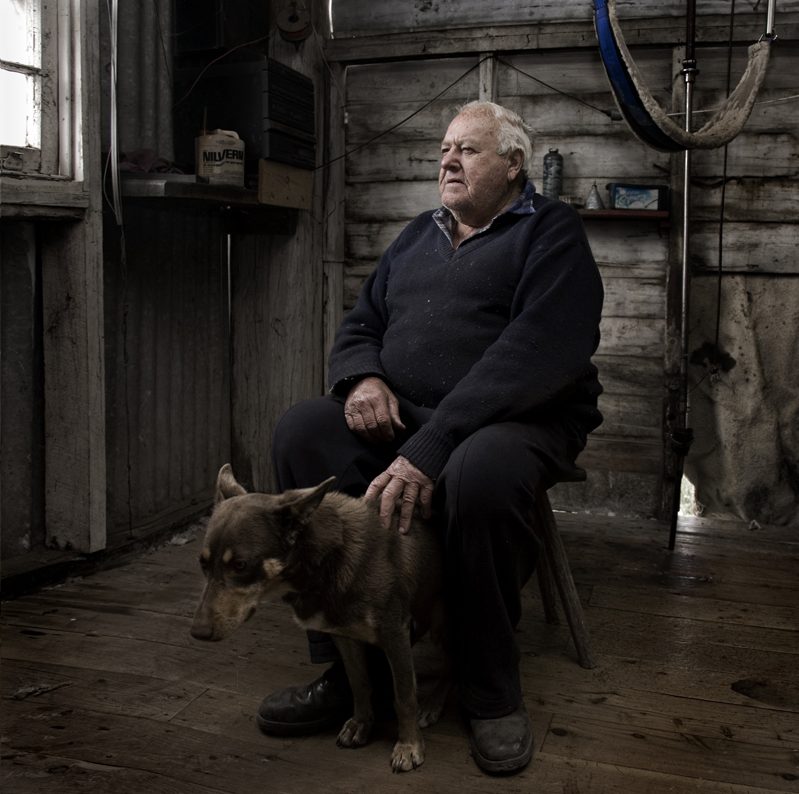
A photograph of former shearer Peter Bush with his faithful old companion, taken at Jerrawa. Photo: Ray McJannett.
Bush family matriarch, Pat, who passed away recently, was more than generous in sharing her knowledge of the community with Ray. And a few of the old customs, including tin kettling.
“It’s an old English tradition where after a couple gets married, all the other guests go to their house and wait outside their bedroom window, carrying lots of pots and pans – anything that makes a noise. The couple is given five minutes and then the noise starts.”
Believe it or not, the newlyweds then come out and make their guests a cuppa.
Ray’s other passion is old-school photography at its best – glass plate negatives. He learned his skill while at the War Memorial and has retained an interest ever since.
After the move to Jerrawa, an old family in Yass gave him their collection of glass plates to clean and scan. Most were portraits of early settlers by acclaimed local photographer Augustus Jones, who was related to the family that inherited them.
“They were remarkable images,” Ray said. “A few of the plates were damaged but, for me, that just gave them extra mystery.”
Ray remains as busy in Jerrawa as he was during his Canberra working life. He takes on projects that interest him, works on the concept, and then goes for it. Like the art of shearing. His latest project – the death of the shearing shed.
“I love looking at the old woolsheds, they still have so much power in them, stories of days gone by,” he said.
“We made our money off the sheep’s back yet all these old sheds have been allowed to fall apart.”
Ray has entered one of his favourite images, of former shearer Peter Bush, in the National Portrait Prize. He took the image of Mr Bush and his dog when the ex-shearer was about 80.
Like much of Ray’s work, the photograph needs no caption. The picture says it all.
Original Article published by Sally Hopman on Riotact.







